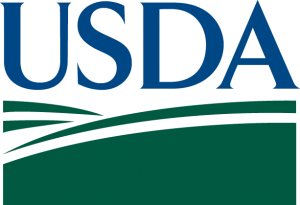FDA Searching for Deputy Commissioner for Human Foods
 The U.S. Food and Drug Administration has begun a national search for a new deputy commissioner for human foods and is providing an update on the proposed restructuring of the agency’s Human Foods Program and Office of Regulatory Affairs to enhance coordination, prevention and response activities.
The U.S. Food and Drug Administration has begun a national search for a new deputy commissioner for human foods and is providing an update on the proposed restructuring of the agency’s Human Foods Program and Office of Regulatory Affairs to enhance coordination, prevention and response activities.
“My search for a new deputy commissioner for human foods is underway, the first recruitment effort open to both external and internal candidates under the agency’s expanded Title 21 hiring authority for a foods-related position,” said FDA Commissioner Robert M. Califf, M.D. “I’m looking forward to starting the interview process and making a selection for this important position as soon as possible.
“There have also been a number of questions about the proposed operational changes for ORA and how these plans will work with changes to the Human Foods Program. I cannot stress enough that my vision is focused on a new, agency-wide model where the activities and responsibilities of the regulatory programs and ORA are better synced to improve efficiency and effectiveness with clear decision rights so that everyone knows who has authority.”
For the proposed Human Foods Program, one key to success will be an empowered deputy commissioner for human foods who will report directly to the FDA commissioner. The agency is focused on identifying a candidate that has the expertise to provide leadership over the FDA’s nutrition and food safety programs (including programs aimed at preventing and responding to chemical, microbial and other hazards). The ideal candidate will have executive-level and real-world experience sufficient to lead the newly envisioned Human Foods Program and its vast remit. This individual will also have clear line of authority over the proposed Human Foods Program, which would include the existing components of the Center for Food Safety and Applied Nutrition, the Office of Food Policy and Response and certain human foods-related components of ORA.
To ensure the new Human Foods Program and all other regulatory programs at the FDA are successful, work on an agency-wide transformation effort of how the programs and field functions are organized and operate is underway. The FDA’s proposal will create a new model that better integrates ORA’s enterprise-wide expertise in field-based operations with product subject matter experts who sit in all the agency’s programs. The deputy commissioner for human foods and other program leads will be charged with setting strategic direction for food inspections and have authority over program resource allocation. To achieve these goals, the agency has started the process of:
- Assessing specific functions of ORA, CFSAN and OFPR to be unified into a new Office of Integrated Food Safety Systems Partnerships that will engage with state, local, tribal, and territorial food safety regulatory partners. The assessment will also include how best to enhance connectivity with international food safety partnership programs.
- Analyzing inspection and compliance functions that sit within both ORA and program offices across the agency to determine opportunities to streamline operations and clarify decision-making authority at each step of the inspection process as well as integrate new automation and information technology support. The new processes will enable ORA and program personnel to function as a multidisciplinary team, eliminating sequential steps, immediately bringing the best expertise to bear on the problem at hand, and speeding decisions.
- Determining how best to empower the deputy commissioner for human foods and leaders of other programs, along with the associate commissioner for regulatory affairs, to oversee program and field resource allocation, including publicly mapping the budget to functional activities to provide clarity on resource allocation.
- Ensuring seamless coordination across the FDA and state-operated food laboratory operations by evaluating the foods laboratory programs, including the relationships, roles, and responsibilities among CFSAN, CVM, ORA and state-operated laboratories.
- Improving the FDA’s ability to conduct risk prioritization to deliver the highest public health benefit by performing an extensive evaluation of how the Human Foods Program accomplishes risk management, particularly risk prioritization, given the multitude of demands and the scarce resources, and how this can be used to guide dynamic work planning and resource allocation.
- Planning for greater enterprise transformation of certain ORA IT functions, which will be coordinated with the FDA’s Office of Digital Transformation. This move builds on the existing project to create an enterprise-wide platform for managing inspections and compliance activities. ODT will drive upgrades to FDA-wide IT systems.
- Evaluating training programs, including for FDA investigators, to see how they can best serve the needs of both the FDA, regulatory partners and regulated industry. This will include assessing whether some training functions or roles should be unified into the Human Foods Program and other product programs.
In addition, the FDA is announcing that this vision will include moving cosmetics regulation and color certification functions out of CFSAN and into the Office of the Chief Scientist. This proposed move will better align the expertise of the agency’s cosmetics subject matter experts with the Chief Scientist who is focused on research, science, and innovation that underpins the agency’s regulatory mission, and recognize the evolution and innovation in this product space. Further, this shift will leverage the FDA’s areas of expertise across the agency as it works to implement the Modernization of Cosmetics Regulation Act of 2022. The office will closely collaborate with the FDA’s Human Foods Program, Center for Drug Evaluation and Research, Office of Minority Health and Health Equity and Office of Women’s Health.
“Our proposal specifically tackles issues identified in two independent evaluations of our food programs, one conducted by the Reagan-Udall FoundationExternal Link Disclaimer and an internal evaluation of the agency’s infant formula response. We’ve heard loud and clear that the current resource distribution and operational model between the FDA’s regulatory programs and field operations are siloed and there’s too much duplication. We intend to fix this and strengthen both the regulatory programs and field force,” Califf said. “Both subject matter experts in the programs and the expertise of our investigators in the field will see more interaction as part of multidisciplinary teams that have clarity on who is in charge of making decisions.”
The FDA is seeking to finalize its proposal this fall. This process includes the development of a reorganization package that contains the newly designed structure, an established budget and a detailed mapping and crosswalk of staff from the current to new organization. The package then undergoes a thorough review before advancing to Congress for a 30-day notification period where members may raise any concerns that the FDA may need to address. Afterward, the FDA will issue a Federal Register Notice, provide notification to and engage, as needed, in negotiations with the Unions for impacted staff, prior to initiation of the new proposal. The FDA will continue to engage with stakeholders throughout this process.
For more news of interest to the food and beverage industry, subscribe to Gourmet News.
FDA Withdraws Food Standards Proposed Rule Based on Comments
 The U.S. Food and Drug Administration is withdrawing the 2005 proposed rule, “Food Standards; General Principles and Food Standards Modernization,” in response to comments received in 2005 after publication of the proposed rule and in 2020 after the FDA reopened the comment period for the proposed rule.
The U.S. Food and Drug Administration is withdrawing the 2005 proposed rule, “Food Standards; General Principles and Food Standards Modernization,” in response to comments received in 2005 after publication of the proposed rule and in 2020 after the FDA reopened the comment period for the proposed rule.
The proposed rule, jointly published with the U.S. Department of Agriculture Food Safety and Inspection Service, was intended, in part, to establish a set of general principles for the FDA and USDA-FSIS to use when considering whether to establish, revise, or eliminate a food standard.
In public meetings the FDA held in July 2018 and September 2019, stakeholders said that due to changes in manufacturing, food technology, market trends and nutrition science since 2005, the FDA should solicit new data and information when determining next steps for the proposed rule. As a result of that feedback, the FDA reopened the comment period in February 2020, for FDA-specific aspects of the proposed rule.
Many of the comments submitted suggested that the general principles be revised and consolidated to make the principles easier to understand and implement. The FDA and USDA-FSIS agree and are withdrawing the proposed rule to reconsider how best to approach general principles and food standards modernization to ensure any future revised general principles are consistent with the Federal Meat Inspection Act, the Poultry Products Inspection Act, and the Federal Food, Drug, and Cosmetic Act.
A joint FDA and USDA effort to publish a new proposed rule on principles for food standards modernization was included in the Fall Unified Agenda.
For more news of interest to the food and beverage industry, subscribe to Gourmet News.
$59M Investment to Strengthen Food Supply Chain, Rural Economies
 The Biden-Harris Administration is investing $59 million across the country to increase independent meat and poultry processing capacity, expand market opportunities for farmers and create jobs in rural areas.
The Biden-Harris Administration is investing $59 million across the country to increase independent meat and poultry processing capacity, expand market opportunities for farmers and create jobs in rural areas.
The investments support the Biden-Harris Administration’s Action Plan for a Fairer, More Competitive, and More Resilient Meat and Poultry Supply Chain, which dedicates resources to expand independent processing capacity. As President Biden has highlighted, creating fairer markets and more opportunities for family farmers helps bring down prices at the grocery store.
“For too long, American farmers and ranchers have been asked to produce more to meet increasing demand across the country and around the world, while they and the rural communities they come from have struggled to see their fair share of the benefits,” U.S. Department of Agriculture Secretary Tom Vilsack said.
“The Biden-Harris Administration and USDA are taking action to advance a sustainable vision of agriculture that prioritizes the needs of our resilient producers and small businesses, strengthens our food supply chain and brings value back to rural people and places. Through investments like those I’m announcing today, USDA will continue to work tirelessly to give farmers and ranchers a fair chance to compete in the marketplace, which in turn helps lower food costs for the American people.”
Vilsack announced the new investments while touring a processing facility in Harrisonburg, Va., that will be expanded with the funding. Vilsack and Deputy Secretary Jewel Bronaugh visited with local producers and members of the community to discuss the importance of these investments to the region’s economy.
USDA is providing the $59 million in grants to five independent processors under the Meat and Poultry Processing Expansion Program. The funding will help build new processing plants, create hundreds of jobs, give local producers and entrepreneurs more options and business opportunities, and give consumers more options at the grocery store.
In Virginia, Shenandoah Valley Organic LLC is receiving a $3.6 million grant to expand its organic chicken processing facility in Harrisonburg to meet increasing demand. The grant will be used for equipment purchases, new conveyor lines, building and site modifications, and a new wastewater treatment system. The improvements will help the facility alleviate processing bottlenecks and nearly double its processing capacity to 630,000 birds per week. These investments will create 300 jobs and enable Shenandoah Valley to provide more processing options and choices for customers.
In Idaho, Riverbend Meats LLC is receiving a $25 million grant to help build an environmentally friendly beef processing plant in Idaho Falls. The funding also will be used for custom equipment and installation of nine miles of mainline gas pipe. The project is expected to double the plant’s capacity from 300 head per day to 600, increasing the price ranchers receive for their cattle and lowering costs for consumers.
In South Dakota, CNF Enterprises LLC is receiving a $3.3 million grant to help build a 30,000-square-foot processing facility in New Underwood. The facility will have the capacity to process 4,000 head per year, including beef, pork, lamb and buffalo. CNF Enterprises is a new company that was formed to help meet the increasing demand for high-quality, locally sourced meat products.
Through the American Rescue Plan, the Bipartisan Infrastructure Law, and the Inflation Reduction Act, the Biden-Harris Administration has made once-in-a-generation investments in rural America. These investments have provided USDA with an unprecedented amount of resources to invest in rural communities and transform our food system.
In November, USDA awarded $75 million to 22 projects under MPPEP. In January, USDA awarded an additional $12 million to three more MPPEP projects. The program is one of many actions that USDA is taking to expand processing capacity, create more revenue streams and market opportunities for producers, and transform the nation’s food system.
Additional information on all these programs is available at www.usda.gov/meat.
Under the Biden-Harris Administration, Rural Development provides loans, grants and loan guarantees to help expand economic opportunities, create jobs and improve the quality of life for millions of Americans in rural areas. This assistance supports infrastructure improvements; business development; housing; community facilities such as schools, public safety and health care; and high-speed internet access in rural, Tribal and high-poverty areas. For more information, visit www.rd.usda.gov.
For more news of interest to the meat and poultry industry, subscribe to Gourmet News.








